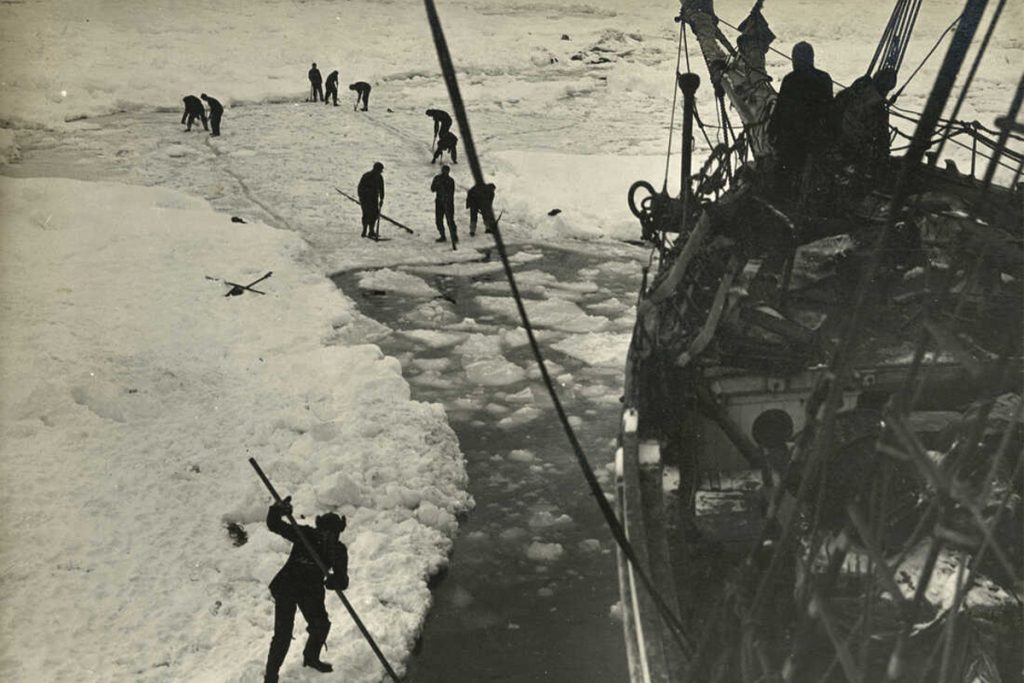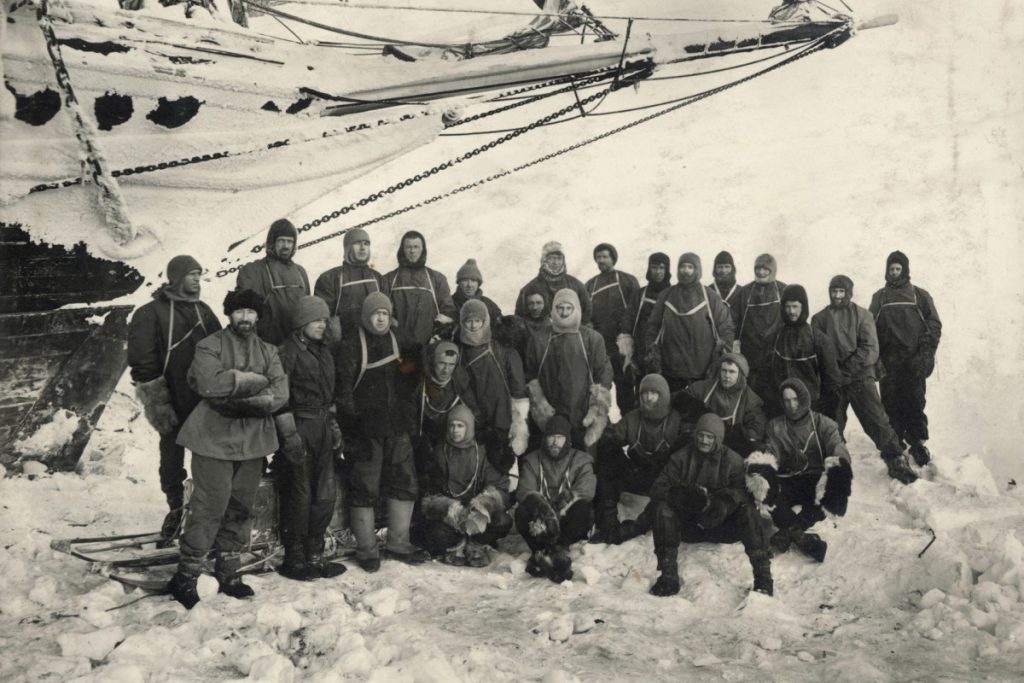After sinking off the coast of Antarctica 107 years ago, Ernest Shackleton’s three-masted ship, Endurance, has been located at the bottom of the Weddell Sea.
According to a release from Endurance22, the international expedition that sought the explorer’s sunken ship, the Endurance was found at a depth of roughly 10,000 feet, approximately four miles south of the position recorded by Captain Worsley in 1915 when the vessel sank.
The long-anticipated find came exactly 100 years after Shackleton’s death and was called “a milestone in polar history” by Mensun Bound, who directed Endurance22’s search.
“This is by far the finest wooden shipwreck I have ever seen,” Bound said in a statement. “It is upright, well proud of the seabed, intact, and in a brilliant state of preservation. You can even see ‘Endurance’ arced across the stern.”

After being crushed by the ice and resting on the bottom of the ocean for more than a century, those seeking the shipwreck have always expected to find mangled pieces of the Endurance if it was ever found at all. The crew was understandably shocked at how perfectly preserved the wooden vessel is.
Much of the ship’s paint is still colorful, and even cooking utensils and clothing were found intact.

“You can see a porthole that is Shackleton’s cabin. At that moment, you really do feel the breath of the great man upon the back of your neck,” Bound said.
The wood and other materials were perfectly preserved by the icy water, which was absent of the marine life that usually breaks it down.

Reaching Shackleton’s Endurance
Endurance22’s home base was the South African research and logistics vessel, S.A. Agulhas II, piloted by Capt. Knowledge Bengu.
They used Saab’s Sabertooth hybrid underwater search vehicles to carry the camera equipment that captured the amazing video and still images from the ocean floor. The vehicles were operated by the team’s two autonomous underwater vehicle (AUV) pilots.

The Sabertooth is a remarkable little machine. It has an operational depth of around 3,000 meters (about 10,000 feet) and can be operated tether-free with 360-degree hovering capability.
The vehicle can be controlled via step-by-step instructions issued by an operator over an optical through-water or acoustic communication link with each step then verified by video or sonar data, or it can be operated manually through a fiber-optic tether or an optical through-water communication link.
They are typically used as lightweight inspection, maintenance, and repair platforms and can store themselves in an underwater docking station until needed.

The Endurance wreck is protected as a Historic Site and Monument under the Antarctic Treaty. While the Endurance22 crew surveyed and shot footage of the wreck, the Endurance couldn’t be touched or disturbed in any way.
The treaty regulates international relations related to Antarctica, the only continent on the planet without a native human population. It was also the first arms control agreement established during the Cold War, setting aside the entire continent as a scientific preserve where military activity is banned. Since 2004, the treaty has been implemented by the Antarctic Treaty Secretariat headquartered in Buenos Aires.
Endurance and Survival

Shackleton’s expedition originally set out from Britain in August 1914 along with a second ship, Aurora. They were trying to become the first-ever explorers to traverse Antarctica.
The Endurance had three masts, the forward of which was square-rigged. The other two carried fore and aft sails like a schooner. Additionally, the ship was powered by a 350 hp coal-fired steam engine capable of speeds up to 10.2 knots (11.7 mph).
The strategy was for each ship to approach from either side of the continent and launch sledge parties that would meet on the Beardmore Glacier before pushing on to the Ross Sea.

By January 1915, the Endurance had become completely frozen in pack ice, which settled in overnight in the Weddell Sea.
Stranded, the crew of 28 men lived in relative comfort on the ship, waiting for the ice to set them free, until October when they had to abandon the Endurance because of irreparable damage to its hull. On Nov. 21, 1915, the ship sank to the icy depths.
Photographer and crew member Frank Hurley took the last images of the sinking ship as the crew escaped across the ice field that consumed the Endurance.

Shackleton and his crew camped on a large ice floe for nearly two months, hoping it would drift toward Paulet Island 250 miles away, where there were cached stores. They tried to march across the ice to the island but failed.
A more permanent camp was established on another floe, which was 60 miles from Paulet Island by March, but the ice between was impassable. In April, the ice floe broke in two, and the crew was ordered into lifeboats.
The men spent five days at sea before the crew’s three lifeboats landed at Elephant Island, 364 miles away from the Endurance. They stood on solid ground for the first time in 497 days.

Shackleton then led a small group on an insane mission to reach a whaling station 800 miles away on South Georgia Island. They chose the strongest lifeboat and reinforced it by raising the sides, strengthening the keel, and building a makeshift deck of wood and canvas. They sealed the boat with oil paint and seal blood.
The party left on Apr. 24, 1916, and made it across the open sea to the whaling station a month later.
Shackleton was finally able to return to his men, and he rescued the entire Endurance crew in August 1916. In January 1917, he finally reached the crew of the Aurora, who had been stranded since early in their mission. Three of that ship’s 10 crew members didn’t make it back.

Over a century later, Bound couldn’t stress the importance of the Endurance22 expedition’s find enough.
“We are bringing the story of Shackleton and Endurance to new audiences, and to the next generation, who will be entrusted with the essential safeguarding of our polar regions and our planet,” he said. “We hope our discovery will engage young people and inspire them with the pioneering spirit, courage, and fortitude of those who sailed Endurance to Antarctica.”
READ NEXT – Tom Crean: 5 Facts About the Most Badass Explorer You’ve Never Heard Of










Comments